Shoulder Internal & External Rotation
Shoulder internal and external rotation are essential movements that play a crucial role in the stability and mobility of the shoulder joint. The shoulder joint is one of the most complex joints in the human body, allowing for a wide range of motion. Internal and external rotation refer to the rotational movements of the upper arm bone (humerus) within the shoulder socket (glenoid cavity).
Internal rotation involves the rotation of the humerus inward towards the centerline of the body. This movement is commonly used in activities such as reaching behind the back, tucking in a shirt, or throwing a ball. Strong internal rotation is important for functional tasks and sports activities that require rotational movements of the shoulder.
External rotation, on the other hand, refers to the rotation of the humerus away from the centerline of the body. It is the opposite motion of internal rotation. External rotation is commonly used when reaching across the body, throwing a ball, or performing activities that require reaching outwards. Adequate external rotation range of motion is crucial for maintaining proper shoulder mechanics and preventing injuries.
Both internal and external rotation movements involve coordinated actions of various muscles around the shoulder joint. The rotator cuff muscles, including the supraspinatus, infraspinatus, teres minor, and subscapularis, are primarily responsible for these movements. These muscles work together to provide stability, control, and smooth coordination during internal and external rotation.
Table of Contents
Shoulder Internal Rotation
What is Shoulder Internal Rotation?
- Shoulder internal rotation refers to the movement of the shoulder joint where the arm rotates inward toward the midline of the body. This movement involves rotation of the humerus (humerus) in the shoulder. Shoulder internal rotation refers to the movement of the arm or upper arm joint in which the humerus (humerus) rotates inward or medially toward the midline of the body. This involves rotating the humerus at the shoulder, allowing the arm and forearm to move toward the center of the body.
During internal rotation of the shoulder, the muscles responsible for this movement contract to turn the arm inside.
The main muscles involved in shoulder internal rotation are the shoulder blades, shoulder blades, latissimus dorsi, and pectoralis major.
Shoulder internal rotation is a necessary movement in various daily activities and sports. It allows you to reach behind you, put on a shirt, throw a ball, and perform many other tasks that involve reaching out or turning inward.
Shoulder internal rotation is an important movement in a variety of daily activities and sports. This allows you to reach behind you, put on a shirt, throw a ball, and perform other tasks that involve turning your arm inward. Maintaining adequate internal rotator muscle strength and flexibility is critical for overall shoulder function and the prevention of imbalance or injury.
It is worth noting that internal rotation of the shoulder must be balanced with external rotation to maintain proper shoulder function and stability. An imbalance between internal and external rotation can lead to shoulder dysfunction or injury. Therefore, it is important to maintain strength and flexibility in internal and external rotation to ensure optimal shoulder health.
Shoulder Internal Rotator Muscles
The internal rotators of the shoulder are a group of muscles responsible for internal rotation in the shoulder joint. The main muscles involved in shoulder internal rotation are:
- Subscapularis: This muscle is located on the front (front) of the scapula (scapula). It is the most powerful internal rotator of the shoulder and is responsible for initiating and executing movements.
- Pectoralis major: The pectoralis major is a large muscle covering the chest’s upper part. Although its primary function is shoulder adduction (supporting the arm to the midline of the body), it also contributes to internal rotation.
- Latissimus dorsi: The latissimus dorsi is a broad muscle that extends down and connects to the upper arm bone. It helps with a variety of movements, including shoulder extension, adduction, and internal rotation.
- Teres major: The teres major is a smaller muscle located on the back of the upper arm. It works with the latissimus dorsi to assist in internal rotation and adduction of the shoulder. Anterior deltoid: Although the anterior deltoid acts primarily as a shoulder flexor and shoulder abductor, it also aids in internal rotation when the arm is in a certain position.
These muscles, along with other shoulder muscles, work together to produce coordinated movements and stabilize the shoulder joint during internal rotation. It is important to note that proper balance and strength between the internal and external rotators are critical to maintaining shoulder stability and preventing imbalance or injury.
ROM of Shoulder Internal Rotation
Shoulder internal rotation range of motion can vary from person to person and can be affected by factors such as flexibility, joint health, and previous injuries. The range of motion is usually measured in degrees of rotation.
In a healthy person, the normal range of motion for shoulder internal rotation is about 70-90 degrees. This means that the arm can rotate inward to the midline of the body to a certain extent. However, it is important to note that range of motion can vary depending on factors such as age, gender, and individual differences. In some cases, certain factors such as tension or muscle imbalances can limit the range of internal rotation of the shoulder. Injuries such as a rotator cuff tear or an adhesive capsule (frozen shoulder) can also affect movement.
A healthcare professional or physical therapist may use goniometry, a measuring tool that measures joint angles, to assess the extent of shoulder internal rotation. They usually allow you to lie on your back with the shoulder in a neutral position and measure the degree of rotation while internally rotating the arm.
Suppose you have limitations in the internal rotation of the shoulder or are concerned about the movement of your shoulder. In that case, it is recommended that you speak to a doctor, such as a physical therapist, who can evaluate your specific situation and provide appropriate guidance and treatment.
Exercise For Shoulder Internal rotation
Here are some exercises to help improve shoulder internal rotation:
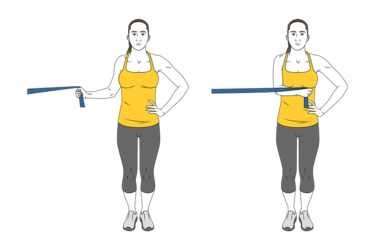
- Sleeping stretch: Lie on your side with the injured shoulder on top. Bend your elbow 90 degrees and place it on a rolled-up towel or pillow for support. With the other hand, gently press down on the back of the forearm, increasing the stretch in the internal rotation.
- Doorway Stretch: Stand in a doorway and place your forearm against the door frame at a 90-degree angle. Step forward so that your leg is on the same side as your outstretched arm. You should feel a stretch in front of your shoulder.
- Cross-body stretch: Bring the arm from the affected shoulder across your body. With the other hand, gently pull the arm closer to the chest and feel the stretch in the back of the shoulder.
- Resistance band internal rotation: Attach a resistance band to a stationary object at waist height. Hold the tape on the affected shoulder with your hand and stand to the side opposite the attachment point. Start with your elbows at 90 degrees and close to your side. Turn your arms inward against the resistance of the strap, keeping your elbow and upper arm still. Return to the starting position gradually. Do 10-15 repetitions & 2-3 sets.
- Constant internal rotation with a resistance band: Attach the resistance band to a standing object at waist height. Stand facing the anchor point to the side and keep a slight bend in the knees. Hold the resistance band with your hand on the affected shoulder, elbow at 90 degrees, and forearm parallel to the ground. Keep your elbow and upper arm still during the exercise. Start with your forearm facing away from your body. Slowly rotate your forearm inward, bringing your hand to your stomach while maintaining resistance to the band. Pause for a moment at the end of the range of motion and then slowly return to the starting position. Work each side for 2-3 sets of 10-15 repetitions. This exercise helps to strengthen the muscles involved in the internal rotation of the shoulder, especially the scapulae.
- Passive Internal Rotation: Lie on your back and place a foam roller or rolled towel vertically along your spine. Hold a light dumbbell or weight plate in your affected shoulder with your arm out to the side. Allow the weight to gently pull your arm down and in, feeling the stretch in your shoulder.
Remember to start with gentle stretches and gradually increase intensity as your range of motion improves. It’s crucial to pay attention to your body and steer clear of any workouts that hurt or are uncomfortable.
Special Test For Shoulder Internal Rotation
If you want to do a special internal rotation test of the shoulder, you can use the “Hornblower Test” or the “Lift Test”. These tests help assess the range of motion and integrity of the subscapularis muscle, which is responsible for the internal rotation of the shoulder joint. Complete each test as follows.
- Test of Hornblower:
Ask the patient to sit or stand with the arm at the side, the elbow bent at a 90-degree angle, and the forearm directed forward. Instruct the patient to internally rotate the shoulder while trying to raise the arm behind the back toward the ceiling. Observe the patient’s ability to fully internally rotate the shoulder joint and note pain, weakness, or limitation of motion. Compare the results with the opposite shoulder.
- Lifting Test:
Ask the patient to place the back of their hand on the small of their back with the elbow at a 90-degree angle. Instruct the patient to raise the arms off the back while maintaining contact with the back. Observe the patient’s ability to raise his arms behind his back and note any pain, weakness, or limitation of motion. Compare the results with the opposite shoulder. Both tests primarily assess the function of the scapulae muscle, which is an important internal rotator of the shoulder joint. A positive test result (pain, weakness, or limited range of motion) may indicate injury or pathology of the scapula.
Shoulder External Rotation
What is Shoulder External Rotation?
- Shoulder external rotation refers to the movement of the arm or upper arm joint in which the humerus (humerus) rotates outward or laterally away from the midline of the body. This involves rotating the humerus at the shoulder, allowing the arm and forearm to move away from the center of the body.
During the external rotation of the shoulder, the muscles responsible for this movement contract and turn the arm outward. The main muscles involved in the external rotation of the shoulder are the infraspinatus, teres minor, posterior deltoid, and rotator cuff muscles (supraspinatus and subscapularis).
Shoulder external rotation is critical for a variety of activities, such as throwing a ball, reaching for objects behind the back, or performing rotational movements in sports such as baseball, tennis, or golf. Maintaining adequate strength and flexibility of the external rotator muscles is important for shoulder stability, balance, and injury prevention.
Shoulder external rotation is an important movement in various activities and sports. It plays an important role in throwing motions, such as in baseball or overhead, and in activities that involve reaching or turning the arm outward, such as reaching for objects behind the back.
Maintaining adequate external rotator muscle strength and flexibility is critical for shoulder stability, injury prevention, and overall shoulder function. External rotation shoulder exercises combined with a balanced program that includes both internal and external rotation exercises can help maintain shoulder health and improve functional strength. It is worth knowing that a balance between internal and external rotation is important for optimal shoulder function. An imbalance between these movements can lead to shoulder dysfunction or injury. Therefore, it is recommended to include exercises that target both internal and external rotation to strengthen the shoulders.
Shoulder External Rotators Muscles
The main muscles responsible for the external rotation of the shoulder are:
- Infraspinatus: The infraspinatus is the scapula located behind the scapula (scapula). It is one of the primary external rotators of the shoulder and plays an important role in generating external rotational force.
- Teres minor: Teres minor is another muscle located behind the shoulder blades, below the infraspinatus. It works with the infraspinatus to help the external rotation of the shoulder.
- Rear deltoid: The rear deltoid is one of the three ends of the deltoid muscle group and is located at the back of the shoulder. Although its primary function is shoulder extension and horizontal abduction, it also contributes to shoulder external rotation.
In some cases, the posterior fibers of the deltoid and the long head of the triceps brachii can also contribute to the external rotation of the shoulder.
These muscles work together to produce external rotation of the shoulder, allowing the arm to turn outward or laterally away from the midline of the body. It is important to maintain a balance of strength and flexibility between the internal and external rotators of the shoulder to ensure optimal shoulder function and prevent imbalance or injury.
ROM of Shoulder External Rotation
Shoulder external rotation range can vary from person to person and can be affected by factors such as flexibility, joint health, and previous injuries. The range of motion is usually measured in degrees of rotation.
In a healthy person, a normal shoulder external rotation range of motion is about 60-90 degrees. This means that the arm can rotate outward or laterally away from the midline of the body to some degree. However, it is important to note that range of motion can vary depending on factors such as age, gender, and individual differences. In some cases, certain factors such as tightness or muscle imbalances can limit the external rotation of the shoulder. Injuries such as rotator cuffs or shoulder impingement can also affect a range of motion.
A health professional or physical therapist can use goniometry, a gauge that determines joint angles, to assess the range of motion of shoulder external rotation. They will usually ask you to assume certain positions while rotating your arm outward and measure the degree of rotation.
If you are concerned about limitations in shoulder range of motion or shoulder external rotation, it is recommended that you consult a physician such as a physical therapist. They can assess your specific situation and provide appropriate guidance, exercises, or actions to correct limitations or imbalances.
Exercise For Shoulder External Rotation
Here’s an exercise to help improve shoulder external rotation:
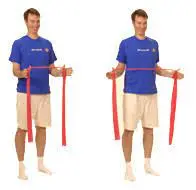
- External standing rotation with a resistance band:
- At waist height, fasten a resistance band to a fixed object.
- Stand facing the anchor point to the side and keep a slight bend in the knees.
- Keeping the elbow at a 90-degree angle and the forearm parallel to the ground, hold the resistance band with your hand on the affected shoulder.
- Keep your elbow and upper arm still during the exercise.
- Start with your forearm facing your stomach.
- Slowly rotate your forearm outward, away from your body, while holding the strap. Pause for a moment at the end of the range of motion and then slowly return to the starting position.
- Work each side for 2-3 sets of 10-15 repetitions. This exercise targets the external rotator muscles of the shoulder, especially the infraspinatus and teres minor muscles. As your strength increases, gradually increase the band’s resistance.
Remember to start with light resistance and listen to your body.
2. Lateral external rotation:
- Lie on your side with the affected shoulder up.
- Bend your elbow 90 degrees, keeping it close to your side.
- Hold a light bar or resistance band. Keeping the elbow and upper arm still, slowly rotate the forearm and hand away from the body, bringing the hands to the back. Continue rolling until your arm is pointing up or just past the ground. Pause for a moment at the end of the range of motion and then slowly return to the starting position.
- Work each side for 2-3 sets of 10-15 repetitions. This exercise targets the external rotator muscles of the shoulder, including the infraspinatus and teres minor. This helps strengthen these muscles and improve shoulder stability and function.
As always, it’s important to start with a light weight or resistance and gradually increase as your strength improves.
3. Lying horizontal abduction:
- Face down on a mat or bench with the affected arm hanging toward the floor.
- Keep your arms straight and thumb up.
- Slowly lift your arm out to the side away from your body, leading the back of your palm.
- Continue until your arm is parallel to the ground.
- Pause for a moment at the end of the movement, then slowly lower your arm. Do 10-15 repetitions for 2-3 sets.
Special Test For Shoulder External Rotation
If you want to do a special shoulder external rotation test, you can use the “Hornblower test” or the “ER Lag Sign”. These tests help assess the range of motion and integrity of the infraspinatus and smaller muscles responsible for external rotation of the shoulder joint. Complete each test as follows.
- Test of Hornblower:
Ask the patient to sit or stand with the arm at the side, the elbow bent at a 90-degree angle, and the forearm directed forward. Instruct the patient to externally rotate the shoulder, trying to rotate the back of the arm away from the body. Observe the patient’s ability to fully externally rotate the shoulder joint and note pain, weakness, or limitation of motion. Compare the results with the opposite shoulder.
- ER Delay Signal (External Rotation Delay Signal):
Ask the patient to sit or stand with the arm at the side, the elbow bent at a 90-degree angle, and the forearm directed forward. Instruct the patient to externally rotate the shoulder as much as possible. When they reach their external rotation range, ask them to hold that position. Support the patient’s arm in this position and ask them to hold it still while you release the wrist or hand. Monitor the patient for delays or inability to maintain the externally rotated position without your support. Compare the results with the opposite shoulder. Both tests primarily assess the function of the infraspinatus and teres minor muscles, which are important external rotators of the shoulder joint. A positive test result (pain, weakness, or inability to maintain external rotation) may indicate injury or pathology of these muscles.
Summary:
Maintaining balanced strength and flexibility in the shoulder muscles is essential for optimal shoulder function and injury prevention. Imbalances between internal and external rotators can lead to shoulder instability, impingement, or other shoulder-related problems. Therefore, it is important to include exercises and stretches that target both internal and external rotation when designing a comprehensive shoulder strengthening and rehabilitation program.
In conclusion, shoulder internal and external rotation are fundamental movements that contribute to the overall function and stability of the shoulder joint. Proper training and conditioning of the muscles involved in these movements can enhance shoulder performance, prevent injuries, and support daily activities and sports that require rotational movements of the shoulder.
FAQs
In anatomy, internal rotation (also known as medial rotation) is rotation toward the center of the body. Rotation away from the body’s center is known as external rotation (sometimes referred to as lateral rotation). The elbow rotates as a result of the shoulders’ internal and external rotation of the arms (humerus).
The most important muscles that internally rotate from the GH joint are the pectoralis major, pectoralis major, scapulae, latissimus dorsi, and anterior deltoid. Many of these muscles are also effective shoulder extensors and adductors. Often, retreat activities include all of these activities.
The internal rotation exercise is an often overlooked exercise for the shoulders. However, it is important because it helps strengthen the rotator cuff, increases shoulder stability, and improves the range of motion. If done regularly and in good condition, the biggest benefit is a reduction in injuries.
Loss of shoulder internal rotation can be caused by many factors, including limited muscle flexibility (stiff or tight soft tissues), excessive stress on the joint capsule, or poor alignment of the shoulder complex (such as poor posture and muscle imbalances).
Regular shoulder external rotator strengthening is necessary to maintain the shoulder joint’s health and injury resistance. What advantages does external rotation offer? used to make the rotator cuff stronger in order to make the shoulder joint more stable. In order to improve the biomechanics of the shoulder joint or glenohumeral joint, this exercise is typically performed to increase the strength or endurance of these muscles.
Your shoulder can rotate in two ways: internal rotation and external rotation. Shoulder internal rotation refers to turning the upper arm to the front of the body. External rotation means turning it away from the front of the body.

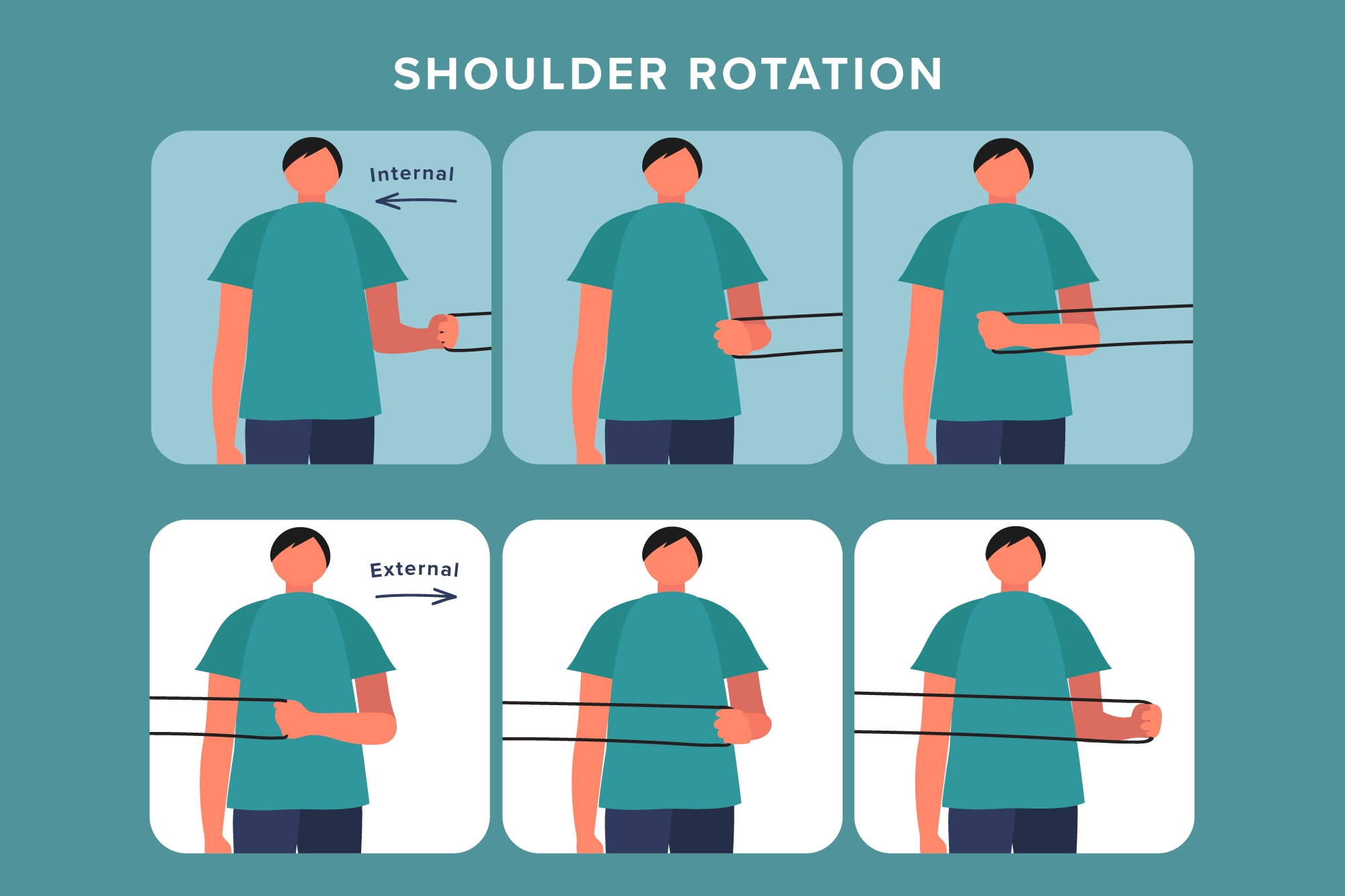
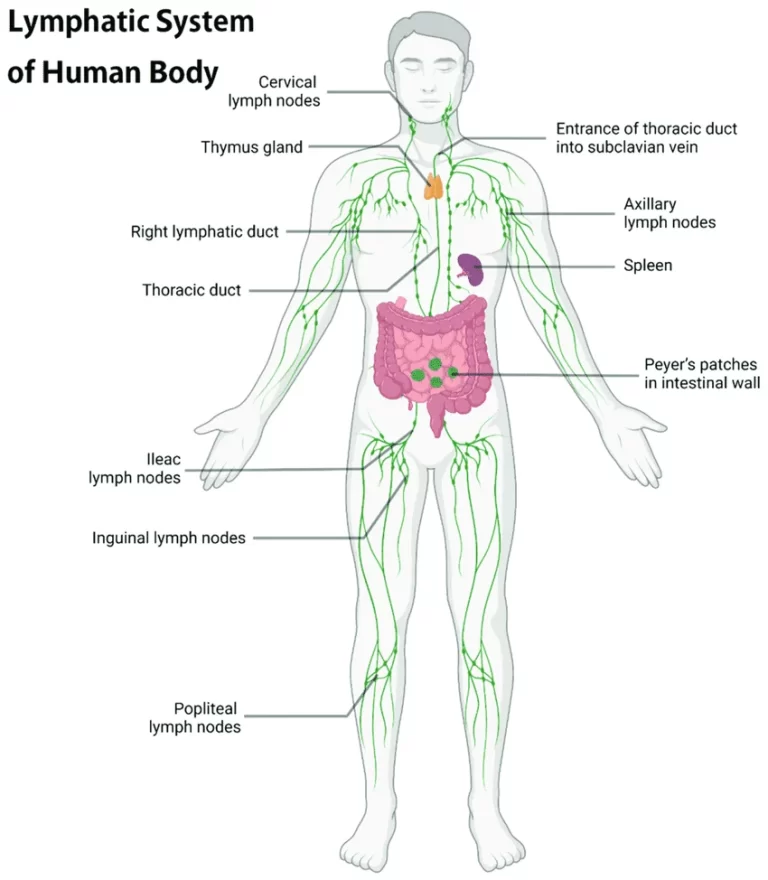
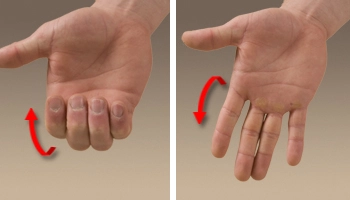
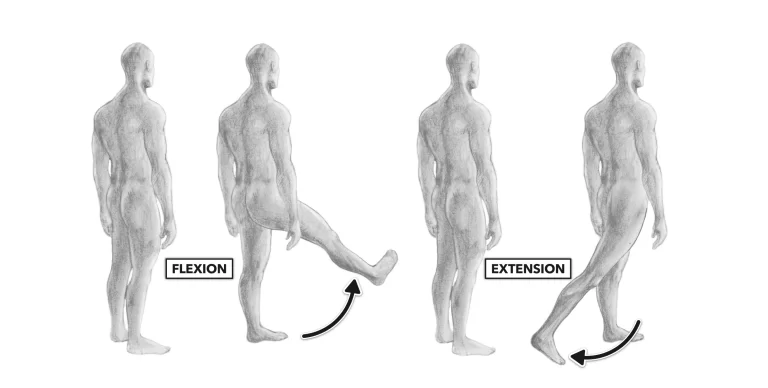
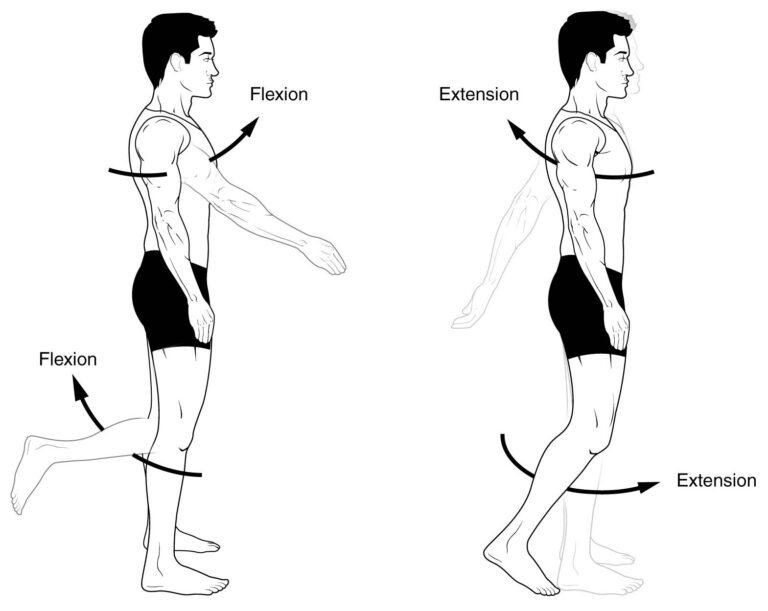

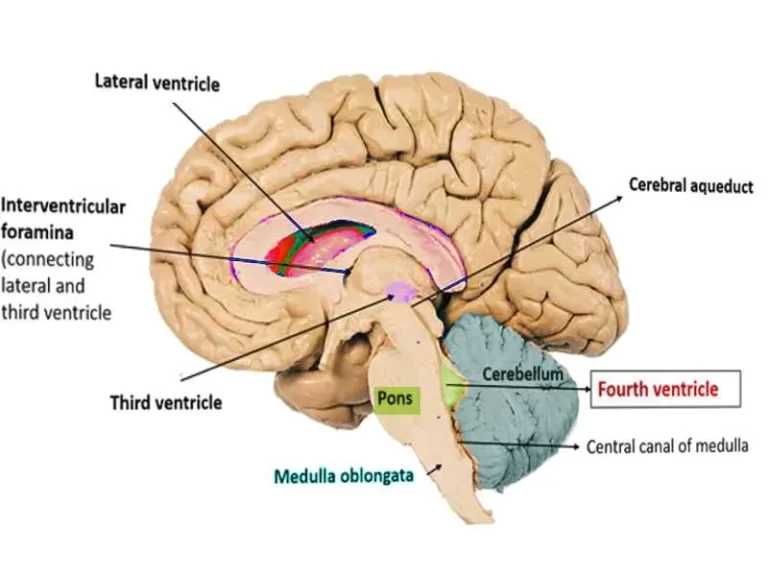
One Comment